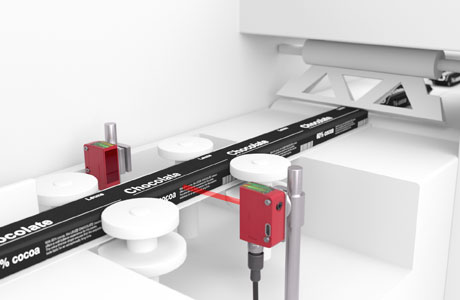Key Takeaway
The frequency of a photoelectric sensor refers to how often the sensor emits and detects light signals. In industrial applications, this frequency can range from 10 Hz to 1 kHz, and for laser sensors, it can go up to 300 kHz. Higher frequency allows the sensor to detect objects faster, making it suitable for fast-moving environments.
Adjusting the frequency can help optimize sensor performance based on the specific application, such as detecting high-speed objects. For most industrial uses, selecting the right frequency ensures accurate and reliable detection.
The Role of Frequency in Photoelectric Sensor Operation
Frequency in a photoelectric sensor refers to how quickly the sensor transmits and receives light signals. These signals allow the sensor to detect objects, changes in environment, or distance. Simply put, the higher the frequency, the faster the sensor can respond to changes, making it ideal for high-speed industrial applications. However, different situations require different frequency settings. In simpler applications, a lower frequency may be sufficient to ensure reliable detection without unnecessary complexity.
For a newly joined engineer, understanding the concept of frequency is vital. Imagine working on a conveyor belt system in a manufacturing plant, where photoelectric sensors need to detect small objects passing through at high speeds. In such cases, a high-frequency sensor is essential for detecting each object accurately without missing any. Frequency becomes the heartbeat of the sensor’s performance, directly impacting its ability to function correctly in various applications.

How Frequency Affects Detection and Response Time
In industrial settings, the frequency of a sensor directly impacts how fast it can detect objects. Higher frequency means a quicker response time, which is essential for high-speed applications like automated packaging lines. If the frequency is too low, a sensor might not detect fast-moving objects, causing production delays or disruptions. For instance, in an automated bottling line, a low-frequency sensor could miss detecting bottles as they zip by. A high-frequency sensor ensures each bottle is detected precisely and on time, avoiding any workflow bottlenecks.
However, faster isn’t always better. While high-frequency sensors are great for fast-moving applications, they may not be the best choice in every scenario. Sometimes, a moderate frequency is more suitable, particularly when extreme sensitivity might trigger false detections. This balance between speed and accuracy makes frequency tuning crucial to system efficiency, especially in precision-based tasks where every millisecond counts.
Typical Frequency Ranges for Industrial Photoelectric Sensors
Photoelectric sensors operate across a broad frequency range, typically between 1 kHz and 10 kHz, to suit various industrial applications. Sensors at the lower end of the range, around 1 kHz, are more appropriate for slow-moving processes, while higher-frequency sensors, often exceeding 10 kHz, are essential in fast-paced environments. Imagine a conveyor sorting system where objects fly past at high speed—choosing the right frequency ensures accurate detection and reduces the risk of missed items.
It’s important to consult the sensor’s datasheet to determine the optimal frequency for your specific application. For slower tasks, such as simple object detection, a low-frequency sensor will suffice. However, for fast-moving systems where precision is critical, like high-speed sorting or quality control, a high-frequency sensor is indispensable.
Adjusting Frequency for Specific Applications
One size does not fit all in industrial automation, especially when it comes to setting the frequency of photoelectric sensors. Modern sensors come with adjustable frequency settings, allowing fine-tuning for specific tasks. This feature adds versatility and allows sensors to adapt to various industrial needs. For example, in a warehouse automation system, the frequency may need to be adjusted to avoid interference from nearby machinery, ensuring accurate detection without false positives.
Fine-tuning the frequency can often be a trial-and-error process, especially for new engineers. But once the optimal setting is found, the sensor’s performance in a specific application becomes highly reliable. This flexibility makes frequency adjustment a key tool for ensuring that your system runs smoothly, without the need for expensive modifications or additional equipment.
Troubleshooting Frequency-Related Issues in Photoelectric Sensors
Despite their efficiency, photoelectric sensors can sometimes run into frequency-related issues, such as signal interference or detection errors. When these problems occur, it’s essential to identify whether the issue is directly tied to frequency. For instance, if multiple sensors are operating close to each other, their signals may interfere, leading to false readings. In such cases, adjusting the frequency of one or more sensors usually resolves the issue quickly.
Environmental factors like dust, electrical noise, or vibrations can also disrupt a sensor’s accuracy. A slight tweak in frequency settings can eliminate these interferences and restore optimal sensor performance. For engineers new to the field, keeping a record of how different frequency adjustments affect the system will help build troubleshooting expertise and prevent future operational hiccups.
Conclusion
Frequency plays a pivotal role in the operation of photoelectric sensors, influencing detection accuracy, response time, and overall performance in industrial settings. For high-speed automation systems, higher frequency settings allow for rapid response times and accurate object detection, whereas lower frequencies may be better suited for slower processes where precision is key. Understanding and adjusting the frequency based on the application’s requirements is essential for ensuring the sensor operates effectively, making it a vital skill for engineers aiming to optimize industrial processes for efficiency and reliability.
